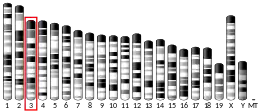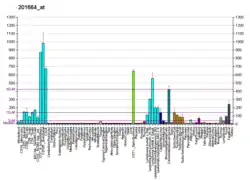| SMC4 | |||||||||||||||||||||||||||||||||||||||||||||||||||
|---|---|---|---|---|---|---|---|---|---|---|---|---|---|---|---|---|---|---|---|---|---|---|---|---|---|---|---|---|---|---|---|---|---|---|---|---|---|---|---|---|---|---|---|---|---|---|---|---|---|---|---|
| |||||||||||||||||||||||||||||||||||||||||||||||||||
| Identifiers | |||||||||||||||||||||||||||||||||||||||||||||||||||
| Aliases | SMC4, CAP-C, CAPC, SMC-4, SMC4L1, hCAP-C, structural maintenance of chromosomes 4 | ||||||||||||||||||||||||||||||||||||||||||||||||||
| External IDs | OMIM: 605575 MGI: 1917349 HomoloGene: 4015 GeneCards: SMC4 | ||||||||||||||||||||||||||||||||||||||||||||||||||
| |||||||||||||||||||||||||||||||||||||||||||||||||||
| |||||||||||||||||||||||||||||||||||||||||||||||||||
| |||||||||||||||||||||||||||||||||||||||||||||||||||
| |||||||||||||||||||||||||||||||||||||||||||||||||||
| |||||||||||||||||||||||||||||||||||||||||||||||||||
| Wikidata | |||||||||||||||||||||||||||||||||||||||||||||||||||
| |||||||||||||||||||||||||||||||||||||||||||||||||||
Structural maintenance of chromosomes protein 4 (SMC-4) also known as chromosome-associated polypeptide C (CAP-C) or XCAP-C homolog is a protein that in humans is encoded by the SMC4 gene.[5][6][7] SMC-4 is a core subunit of condensin I and II, large protein complexes involved in high order chromosome organization,[8] including condensation and segregation.[9] SMC-4 protein is commonly associated with the SMC-2 protein, another protein complex within the SMC protein family. SMC-4 dimerizes with SMC-2, creating the flexible and dynamic structure of the condensin holocomplex.[8] An over-expression of the SMC-4 protein is shown to impact carcinogenesis.[10][11][9]
Structure and interactions

The primary 5 domain structure of SMC proteins is highly conserved among species. The basic structure of SMC proteins are characterized by a non-helical hinge group, separated by two anti-parallel α-helical coiled-coil domains, along with two Amino-terminal globular domains containing ATP hydrolytic sites, or nucleotide-binding motifs located at the C-terminus and N-terminus called the Walker A and Walker B motifs.[12]
In eukaryotes, dimerization is mediated by the self-folding of the non-helical hinge group on the SMC protein. Dimerization occurs at the non-helical hinge group of SMC-4, which then associates with the non-helical hinge group of SMC-2, creating a V-shaped heterodimeric structure. the holocomplex of condensin contains the SMC-4 and SMC-2 heterodimer subunits, along with 3 other non-SMC subunits, CAP-D2, CAP-G, and CAP-H.[9]
In the condensin holocomplex, a protein subunit called kleisin joins the C-terminus and N-terminus ATPase end domains of both SMC-4 and SMC-2 proteins. when the condensin holocomplex is bound with ATP at these end domains, the condensin will assume a "closed" conformation state.[8] SMC-4 is a dynamic and flexible protein, allowing different domain components to occasionally interact with others. This is speculated to be involved in the mechanical ability of the complex when associated with chromosomes.[8] In budding yeast, these interactions may result in open "O" appearances, or collapsed B-shaped states as a result of its dynamic ability.[13]
Clinical significance
The SMC-4 protein is associated with abnormal cell and tumor growth, and involved with migration and invasion. In general, the presence of over-expressed SMC-4 proteins is thought to be correlated with carcinogenesis.[10]
It is found that an over-expression or down-regulation of the SMC-4 protein alters TGFβ/Smad signaling pathways in glioma cells. SMC-4-transduced glioma cells showed activation of the TGFβ/Smad signaling pathway which was not present in SMC-4 silenced glioma cells. This pathway was shown to be correlated with an "aggressive" behavioral phenotype in glioma cells. An over-expression of SMC-4 can induce a higher rate of proliferation, and ultimately increased invasive capability. A down-regulation of SMC-4 reduced this quality.[10]
The SMC-4 protein is involved with normal lung development however, adenocarcinoma lung tissue shows an over-expression of SMC-4. additionally, SMC-4 may act as independent prognostic factor for carcinogenesis and lung adenocarcinoma.[9]
Studies suggest that over-expression of the SMC-4 protein in human liver tissue may be correlated with progression of hepatocellular carcinoma.[11]
References
- 1 2 3 GRCh38: Ensembl release 89: ENSG00000113810 - Ensembl, May 2017
- 1 2 3 GRCm38: Ensembl release 89: ENSMUSG00000034349 - Ensembl, May 2017
- ↑ "Human PubMed Reference:". National Center for Biotechnology Information, U.S. National Library of Medicine.
- ↑ "Mouse PubMed Reference:". National Center for Biotechnology Information, U.S. National Library of Medicine.
- ↑ "Entrez Gene: SMC4 structural maintenance of chromosomes 4".
- ↑ Nishiwaki T, Daigo Y, Kawasoe T, Nagasawa Y, Ishiguro H, Fujita M, et al. (Jun 1999). "Isolation and characterization of a human cDNA homologous to the Xenopus laevis XCAP-C gene belonging to the structural maintenance of chromosomes (SMC) family". Journal of Human Genetics. 44 (3): 197–202. doi:10.1007/s100380050142. PMID 10319587.
- ↑ Schmiesing JA, Ball AR, Gregson HC, Alderton JM, Zhou S, Yokomori K (October 1998). "Identification of two distinct human SMC protein complexes involved in mitotic chromosome dynamics". Proceedings of the National Academy of Sciences of the United States of America. 95 (22): 12906–12911. Bibcode:1998PNAS...9512906S. doi:10.1073/pnas.95.22.12906. PMC 23650. PMID 9789013.
- 1 2 3 4 Eeftens JM, Katan AJ, Kschonsak M, Hassler M, de Wilde L, Dief EM, et al. (March 2016). "Condensin Smc2-Smc4 Dimers Are Flexible and Dynamic". Cell Reports. 14 (8): 1813–1818. doi:10.1016/j.celrep.2016.01.063. PMC 4785793. PMID 26904946.
- 1 2 3 4 Zhang C, Kuang M, Li M, Feng L, Zhang K, Cheng S (September 2016). "SMC4, which is essentially involved in lung development, is associated with lung adenocarcinoma progression". Scientific Reports. 6 (1): 34508. Bibcode:2016NatSR...634508Z. doi:10.1038/srep34508. PMC 5043270. PMID 27687868.
- 1 2 3 Jiang L, Zhou J, Zhong D, Zhou Y, Zhang W, Wu W, et al. (March 2017). "Overexpression of SMC4 activates TGFβ/Smad signaling and promotes aggressive phenotype in glioma cells". Oncogenesis. 6 (3): e301. doi:10.1038/oncsis.2017.8. PMC 5533949. PMID 28287612.
- 1 2 Zhou B, Chen H, Wei D, Kuang Y, Zhao X, Li G, et al. (June 2014). "A novel miR-219-SMC4-JAK2/Stat3 regulatory pathway in human hepatocellular carcinoma". Journal of Experimental & Clinical Cancer Research. 33 (1): 55. doi:10.1186/1756-9966-33-55. PMC 4096530. PMID 24980149.
- ↑ Hirano T (February 2002). "The ABCs of SMC proteins: two-armed ATPases for chromosome condensation, cohesion, and repair". Genes & Development. 16 (4): 399–414. doi:10.1101/gad.955102. PMID 11850403. S2CID 45664625.
- ↑ Ryu JK, Katan AJ, van der Sluis EO, Wisse T, de Groot R, Haering CH, Dekker C (December 2020). "The condensin holocomplex cycles dynamically between open and collapsed states". Nature Structural & Molecular Biology. 27 (12): 1134–1141. doi:10.1038/s41594-020-0508-3. PMID 32989304. S2CID 222146992.
Further reading
- Hirano T (February 2002). "The ABCs of SMC proteins: two-armed ATPases for chromosome condensation, cohesion, and repair". Genes & Development. 16 (4): 399–414. doi:10.1101/gad.955102. PMID 11850403.
- Ball AR, Yokomori K (2001). "The structural maintenance of chromosomes (SMC) family of proteins in mammals". Chromosome Research. 9 (2): 85–96. doi:10.1023/A:1009287518015. PMID 11321372. S2CID 23761326.
- Ham MF, Takakuwa T, Rahadiani N, Tresnasari K, Nakajima H, Aozasa K (July 2007). "Condensin mutations and abnormal chromosomal structures in pyothorax-associated lymphoma". Cancer Science. 98 (7): 1041–1047. doi:10.1111/j.1349-7006.2007.00500.x. PMID 17488335. S2CID 25888221.
- Nousiainen M, Silljé HH, Sauer G, Nigg EA, Körner R (April 2006). "Phosphoproteome analysis of the human mitotic spindle". Proceedings of the National Academy of Sciences of the United States of America. 103 (14): 5391–5396. Bibcode:2006PNAS..103.5391N. doi:10.1073/pnas.0507066103. PMC 1459365. PMID 16565220.
- Geiman TM, Sankpal UT, Robertson AK, Chen Y, Mazumdar M, Heale JT, et al. (2004). "Isolation and characterization of a novel DNA methyltransferase complex linking DNMT3B with components of the mitotic chromosome condensation machinery". Nucleic Acids Research. 32 (9): 2716–2729. doi:10.1093/nar/gkh589. PMC 419596. PMID 15148359.
- Wiemann S, Weil B, Wellenreuther R, Gassenhuber J, Glassl S, Ansorge W, et al. (March 2001). "Toward a catalog of human genes and proteins: sequencing and analysis of 500 novel complete protein coding human cDNAs". Genome Research. 11 (3): 422–435. doi:10.1101/gr.GR1547R. PMC 311072. PMID 11230166.
- Kimura K, Cuvier O, Hirano T (February 2001). "Chromosome condensation by a human condensin complex in Xenopus egg extracts". The Journal of Biological Chemistry. 276 (8): 5417–5420. doi:10.1074/jbc.C000873200. PMID 11136719.
- Schmiesing JA, Gregson HC, Zhou S, Yokomori K (September 2000). "A human condensin complex containing hCAP-C-hCAP-E and CNAP1, a homolog of Xenopus XCAP-D2, colocalizes with phosphorylated histone H3 during the early stage of mitotic chromosome condensation". Molecular and Cellular Biology. 20 (18): 6996–7006. doi:10.1128/MCB.20.18.6996-7006.2000. PMC 88774. PMID 10958694.
- Suzuki Y, Yoshitomo-Nakagawa K, Maruyama K, Suyama A, Sugano S (October 1997). "Construction and characterization of a full length-enriched and a 5'-end-enriched cDNA library". Gene. 200 (1–2): 149–156. doi:10.1016/S0378-1119(97)00411-3. PMID 9373149.
- Maruyama K, Sugano S (January 1994). "Oligo-capping: a simple method to replace the cap structure of eukaryotic mRNAs with oligoribonucleotides". Gene. 138 (1–2): 171–174. doi:10.1016/0378-1119(94)90802-8. PMID 8125298.
External links
- SMC4 human gene location in the UCSC Genome Browser.
- SMC4 human gene details in the UCSC Genome Browser.
- PDBe-KB provides an overview of all the structure information available in the PDB for Human Structural maintenance of chromosomes protein 4 (SMC4)
- PDBe-KB provides an overview of all the structure information available in the PDB for Mouse Structural maintenance of chromosomes protein 4 (SMC4)





